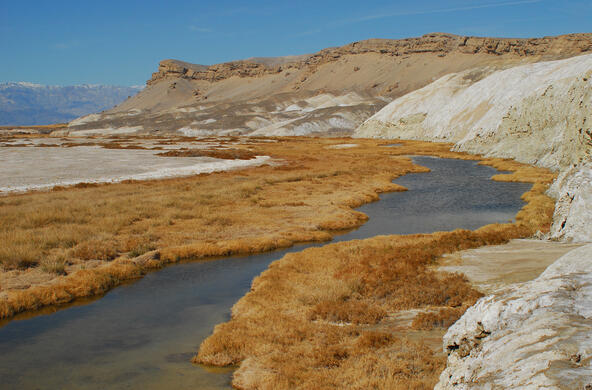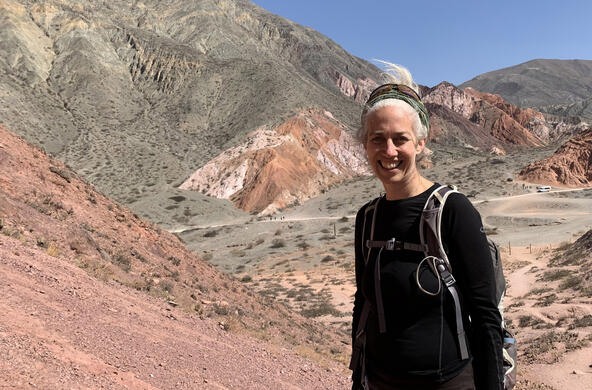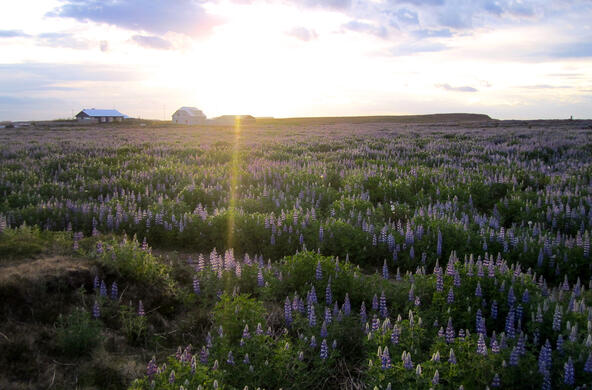There is no dry land at the North Pole and under much of the Arctic ice pack. The ocean there is covered with ice, known as sea ice, which is floating on the water beneath. If it melts, it will not cause a rise in sea level, the same way the ice cubes melting in your martini won’t cause it to overflow the glass. Archimedes recognized that ice displaces its weight in water.
Sea level aside, the news that sea ice is melting in the Arctic is not pleasing. When sea ice covers the Arctic, it offers a reflective white surface to the incoming radiation of the sun. When the ice melts, much of the sun’s radiation is absorbed by the darker sea water now exposed, which itself warms, causing more sea ice to melt. The ongoing loss of sea ice in the Arctic is prima facie evidence of the ongoing warming of our planet from the additions of carbon dioxide and other greenhouse gases to the atmosphere.
Once it melts, sea ice offers a positive feedback to further loss, spurring greater melting and less refreezing in winter. As much as 20% of the current global warming we are experiencing may be due to the loss of reflectivity (or albedo) in the Arctic.
The first quantitative reports of the loss of sea ice came from the Navy in 1992. This summer the extent of Arctic sea ice diminished to 4,700,000 km2 among the lowest on record[1] since satellite monitoring began. For comparison, in 1979, sea ice covered 6,500,000 km2. The sea ice that now remains is thinner, so some arctic scientists predict that summers at the North Pole will be ice-free by 2030. The current decline in sea ice appears unprecedented during the past 1450 years, and it is likely that the Arctic has not been ice-free in the past 2,000,000 years.
We are just beginning to understand how the loss of sea ice in the Arctic affects other aspects of global climate, just as the polar jet stream. And an ice-free Arctic ocean offers the potential for new shipping lanes and exploitation of mineral deposits on the sea floor, but also a tactical dilemma for the U.S. Navy, which must patrol a new ocean.
Of course, it is likely that sea ice has melted during warmer periods of the Earth’s more distant past. And, at least one climate model suggests that it will reform if we can break out of the current trend of global warming. But, for now, the loss of sea ice reinforces global climate trends set forth by human activities, and it is not likely to portend a rosy future for any of us.
References
Fetterer, F. and N. Untersteiner. 1998. Observations of melt ponds on Arctic sea ice. Journal of Geophysical Research-Oceans 103: 24821-24835
Flanner, M. G., K.M. Shell, M. Barlage, et al. 2011. Radiative forcing and albedo feedback from the Northern Hemisphere cyrosphere between 1979 and 2008. Nature Geoscience 4: 151-155.
Kinnard, C., C. M. Zdanowicz, D.A. Fisher, E. Isaksson, A. de Vernal and L.G. Thompson. 2011. Reconstructed changes in Arctic sea ice over the past 1450 years. Nature 479: 509-512.
Kintisch, E. 2015. Boom and bust in the great white north. Science 349: 579-581.
Kwok, R., and N. Untersteiner. 2011. The thinning of Arctic sea ice. Physics Today 64 (4): 36-41.
Laxon, S.W., K.A. Giles, A.L. Ridout et al., 2013. CryoSat-2 estimates of Arctic sea ice thickness and volume. Geophysical Research Letters 40: 732-737.
McLaren, A.S., J.E. Walsh, R.H. Bourke, R.L. Weaver, and W. Wittmann. 1992. Variability in sea-ice thickness over the North Pole from 1977 to 1990. Nature 358: 224-226.
Polyak, L., R.B. Alley, J.T. Andrews, et al. 2010. History of sea ice in the Arctic. Quaternary Science Reviews 29: 1757-1778.
Tilling, R., A. Ridout, A. Shepherd, and D.J. Wingham. 2015. Increased Arctic sea ice volume after anomalously low melting in 2013. Nature Geoscience doi:10.1038/ngeo2489
Vihma, T. 2014. Effects of arctic sea ice decline on weather and climate: A review. Surveys in Geophysics 35: 1175-1214
[1] Currently 4th on 6 September 2015







